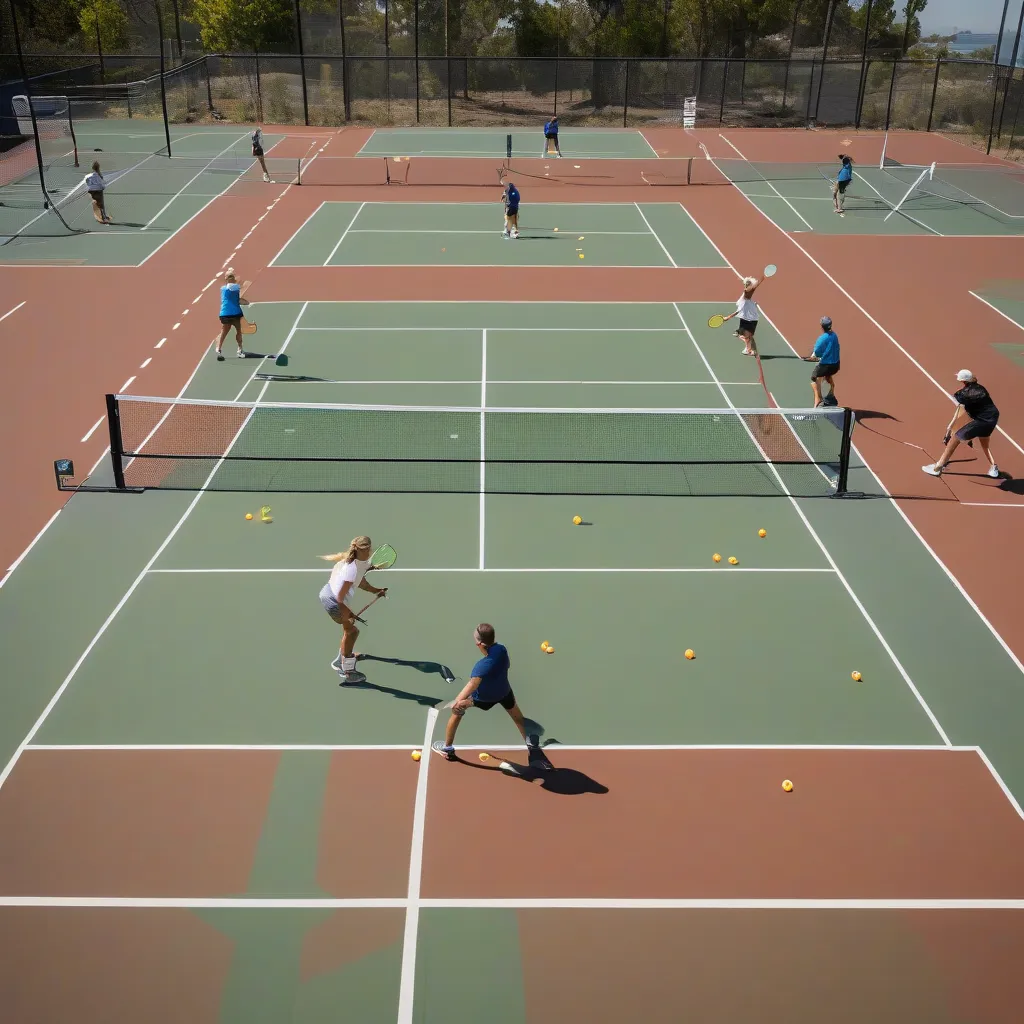Imagine this: you’re locked in a thrilling pickleball rally, the ball zipping back and forth like a hummingbird. You’re not just hitting the ball; you’re strategically placing each shot, dictating the flow of the game. This is the power of building strategic rallies, and it’s a game-changer in pickleball. This article will dive deep into the techniques and strategies you need to transform your rallies from random exchanges into calculated point-winners.
Understanding the Dynamics of a Pickleball Rally
Before we delve into specific tactics, it’s crucial to understand what makes a rally strategic. It’s not just about hitting the ball hard; it’s about control, placement, and anticipating your opponent’s moves. A strategic rally is like a chess match on the court, where every shot sets up the next, leading to a winning position. Just like in nutrition, where balanced meals fuel your body, balanced shots fuel your pickleball game.
Key Elements of Strategic Rally Building
Court Positioning and Movement
Your position on the court is paramount. The non-volley zone (NVZ), often called “the kitchen,” is a critical area. Controlling this zone allows you to dominate the net and dictate the tempo. Effective movement, including quick footwork and lateral shuffles, allows you to reach shots efficiently and maintain optimal court coverage. “Swift footwork is as essential to pickleball as proper form is to weightlifting,” says renowned pickleball coach, Alex Hamner.
Shot Selection and Placement
Strategic rallies rely on choosing the right shot at the right time. Dinks, drops, drives, and lobs all have their place. Aiming for specific areas of the court, like your opponent’s backhand or open spaces, can create opportunities and force errors. “Every shot tells a story. Make sure yours is a winning one,” advises pro pickleball player, Sarah Ansboury.
Developing a Third Shot Drop
The third shot drop is a cornerstone of strategic pickleball. After the serve and return, a well-executed drop shot can pull your opponents off the baseline, giving you the opportunity to move forward and control the net. Mastering this shot is like perfecting your go-to healthy snack: essential for fueling your success.
Reading Your Opponent
Anticipating your opponent’s moves is crucial. Watch their paddle position, body language, and previous shot patterns to predict their next move. This allows you to position yourself strategically and select the most effective counter-shot. “Reading your opponent is like understanding your body’s nutritional needs. It’s about recognizing patterns and responding effectively,” comments sports psychologist, Dr. Emily Carter.
Communication in Doubles
If you’re playing doubles, communication is key. Calling out shots, announcing poaching intentions, and supporting your partner creates a cohesive unit and prevents confusion on the court. Clear communication, like a well-planned meal prep, streamlines your game and maximizes efficiency.
Drills to Enhance Rally Building
Dinking Drills
Practicing dinking drills hones your touch and control at the net. This can significantly improve your ability to place the ball strategically and set up winning shots. For additional dinking practice, check out our guide on Top Pickleball Drills for Better Dinking.
Third Shot Drop Drills
Focusing on third shot drop drills will refine your ability to execute this critical shot consistently and accurately.
Cross-Court Drills
Cross-court drills develop your ability to move laterally and maintain control while hitting shots at angles, essential for strategic placement.
Mini-Court Rallies
Playing mini-court rallies emphasizes control and precision, forcing you to be more strategic with your shot selection and placement.
Putting it All Together: Building a Winning Rally
Building a strategic rally is like crafting a balanced and nutritious meal: each element plays a vital role. Starting with a strong serve and return, you then use your third shot drop to gain control of the net. From there, you utilize dinks, drops, and drives to create openings and force errors, all while anticipating your opponent’s moves and maintaining effective communication with your partner (in doubles).
“Remember, consistency is key,” says legendary pickleball player, Simone Jardim. “Just like sticking to a healthy eating plan, consistent practice and strategic thinking will transform your rallies and elevate your game.”
 Pickleball Strategies
Pickleball Strategies
Conclusion
Building strategic rallies is the heart and soul of successful pickleball. By mastering court positioning, shot selection, reading your opponent, and communicating effectively, you can transform your game from random exchanges into calculated point-winners. Remember, just like any skill, building strategic rallies takes practice and dedication. So, get out on the court, implement these strategies, and watch your pickleball game reach new heights.
We encourage you to share your experiences and insights on building strategic rallies in the comments below. What are your favorite drills or tactics? Let’s learn and grow together! And for more tips on improving your pickleball performance, check out How Diet Impacts Pickleball Performance and Pickleball Shot Sequencing for Tactical Advantages. You might also find value in exploring Training Techniques to Handle High-Paced Rallies and Top Agility Ladder Drills for Pickleball.
- Bond, Payton (Author)
- English (Publication Language)
- Baker, Joe (Author)
- English (Publication Language)
- Anderson, Brian (Author)
- English (Publication Language)
- Carnot, Prem (Author)
- English (Publication Language)
- Palcic, Lisa (Author)
- English (Publication Language)
- Callahan, John (Author)
- English (Publication Language)
- Hall, Dennis (Author)
- English (Publication Language)
- Baker, Mr. Joe (Author)
- English (Publication Language)
- Foster, Blake (Author)
- English (Publication Language)
- Satka, David (Author)
- English (Publication Language)









